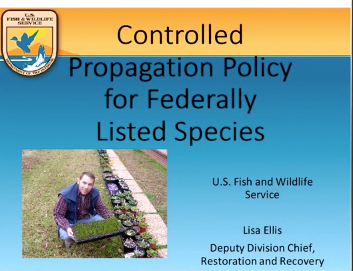
Controlled Propagation Policy for Federally Listed Species Lisa Ellis, US Fish and Wildlife Service Lisa Ellis, USFWS, reviews the Controlled Propagation Policy for Federally Listed Species. The policy developed with input from the Center for Plant Conservation follows CPC guidelines. Lisa reviews the purpose and scope of the policy. Controlled propagation can be used as a recovery strategy, coordinated […]
Read More…
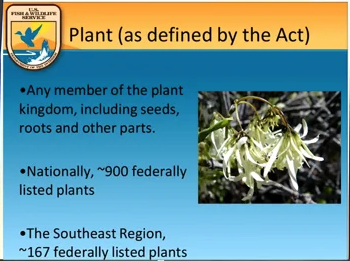
Endangered Species Act and Recovery Planning Lisa Ellis, US Fish and Wildlife Service Lisa Ellis, USFWS, reviews the components of the Endangered Species Act, terminology for endangered and threatened species, activities prohibited, and the recovery planning process. She reviews the new process and look of recovery planning documents, supplementary documents (Species Status Assessment and Recovery […]
Read More…
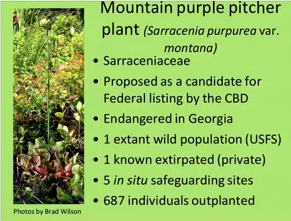
Safeguarding Mountain Bog and the Mountain Purple Pitcher Plant Carrie Radcliffe, Atlanta Botanical Garden (SePPCon 2016) Wetland species are particularly at high risk of extinction. The Mountain Bog Safeguarding is a Georgia Plant Conservation Alliance signature project that seeks to safeguard bog endemics from one of the rarest habitats in Georgia. This entails conservation horticulture, research, […]
Read More…
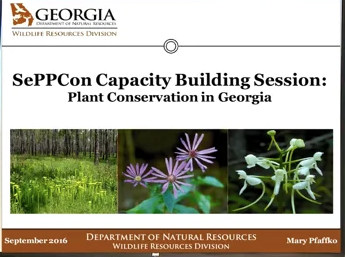
Building Capacity in Plant Conservation Mary Pfaffko, Georgia Department of Natural Resources & Georgia Plant Conservation Alliance (SePPCon 2016) Mary Pfafftko, Department of Natural Resources Wildlife Resources Division emphasizes that the plant conservation needs can only be done with partnerships. She reviews the key elements of State Wildlife Action Plans: species of greatest conservation need, […]
Read More…
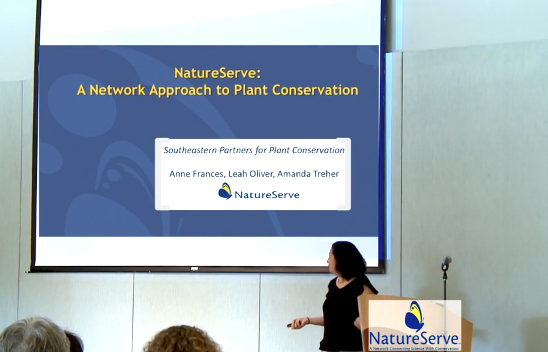
NatureServe: A Network Approach to Plant Conservation Anne Francis, Leah Oliver, Amanda Treher, NatureServe (SePPCon 2016) Anne Frances, lead Botanist reviews the programs of NatureServe in the Americas, how conservation status assessments are done and the unique role of ranks. Conservation status assessments help prioritize actions. She reviews the need for updating ranks as new […]
Read More…
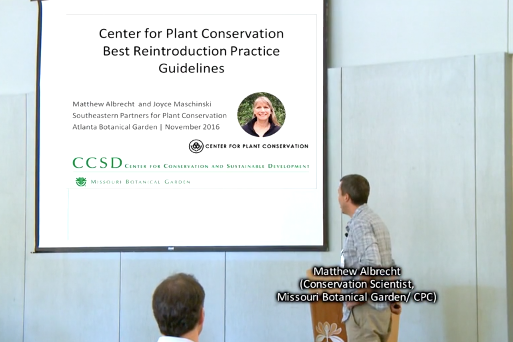
CPC Best Reintroduction Practice Guidelines: Astragalus bibullatus Case Study Matthew Albrecht, Missouri Botanical Garden (SePPCon 2016) Reintroduction is a critical component of rare species conservation with the goal of continuing evolution in a natural context. Within the southeastern U.S. 81% of recovery plans include reintroduction as a proposed conservation action, while in Hawaii almost all plant […]
Read More…
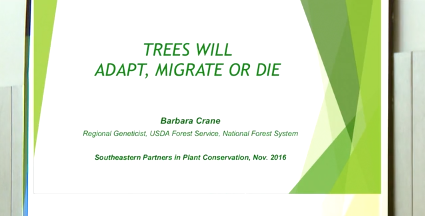
Trees Will Adapt, Migrate or Die Barbara Crane, US Forest Service, National Forest System (SePPCon 2016) Barbara Crane, USFS, describes special considerations for trees. Because the are long-lived, they cannot respond quickly to multiple threats from pathogens, fire, drought and climate change. Rates of historic migration of 300 to 1200 ft/yr cannot keep up with the […]
Read More…
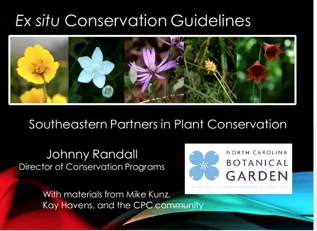
Johnny reviews the Center for Plant Conservation best practices related to the link between ex situ and in situ actions. Ex situ collections held as seeds or whole plants can help with research on germination or cultivation and reintroductions to the wild. He discusses clues that may trigger ex situ action, reviews the organizations that help […]
Read More…
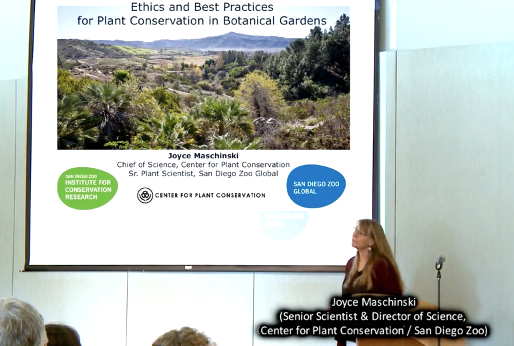
Joyce Maschinski, San Diego Zoo Global and Center for Plant Conservation (SePPCon 2016) Joyce reviews the ethical considerations guiding our plant conservation professional conduct. Within the CPC, we have found that some actions are widely accepted standards, while others are context-specific and debated. CPC advises that practitioners are mindful of their institutional codes in collection […]
Read More…








